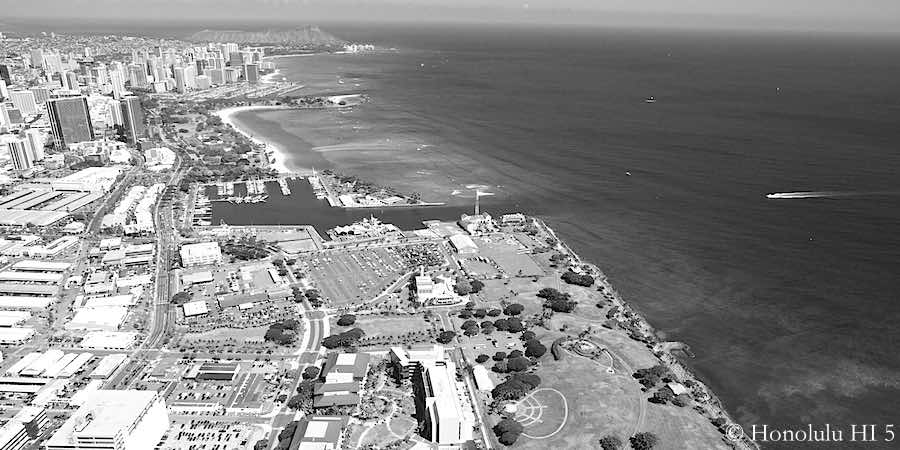Telling the story of development in Honolulu can be reduced down to one thing – Housing was needed, and needed badly. As true as that it is, it’s a much more interesting and much more complex tale.
We can’t cover the creation of every neighborhood, but we can tell you the major sea changes that propelled us forward and created an astonishing place in the middle of the Pacific.
This is a tropical town that went from just a picture postcard of a dreamed of paradise for anyone outside the Islands to a bustling city with residents, let alone visitors, from all over the world. How did we get here?
Believe it or not, it all began with a project that had nothing to do with relieving a housing crisis. It was more like a visit from PT Barnum.
THE FIRST TRUE DEVELOPMENT IN HONOLULU REAL ESTATE
You could say that the first development of real estate in Honolulu, in the pure sense of the word, was Pacific Heights’ initial, ill fated run in 1899. The lots were heavily promoted, with a specially installed electric railway to take the curious up above Downtown to see what their views could be if they bought a spot.
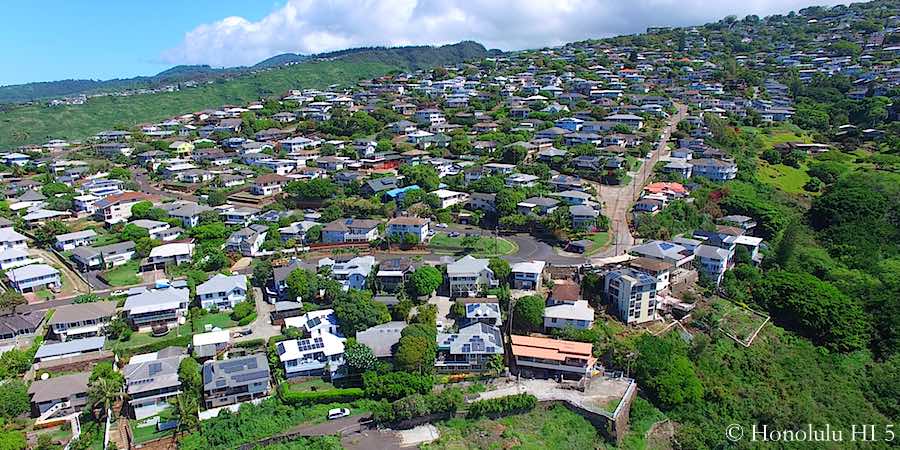
Ultimately this effort was brought down by the man behind it all, Charles Desky. His reluctance to pay his mortgage on the 450 acres brought the new community to a complete halt, with Desky fleeing to Shanghai to escape legal issues and angry buyers who lost their properties. Desky had never registered their deeds, leaving them owning nothing when the scheme unraveled. The famous railway closed soon after when, in an incredibly symbolic event, the cars went off the rails one day.
The debacle prevented anyone taking the project up for another 2 decades, the 1920’s finally seeing Pacific Heights containing the upscale Honolulu homes for many of the city’s movers and shakers. Desky’s dream came true, but only did so without him.
TWO MAJOR BREAKTHROUGHS THAT OPENED UP HONOLULU
That wasn’t the only neighborhood that took shape during the 1920’s. The increased expansion of Honolulu in that decade is linked especially to 2 innovations that changed the face of the city completely.
The first was an advancement in building technology that allowed for entire communities to be built up the hillsides that were all over the city. Before this the wealthy could afford to have residences built on elevated places such as Tantalus, but those were few in number.
Now, previously untouched slopes began to sprout streets and houses, such as St. Louis Heights and Wilhelmina Rise. These homes were popular for their often panoramic views, while being generally targeted at more average families, rather than the upper classes who alone could previously enjoy the cooler climes and better sight lines.
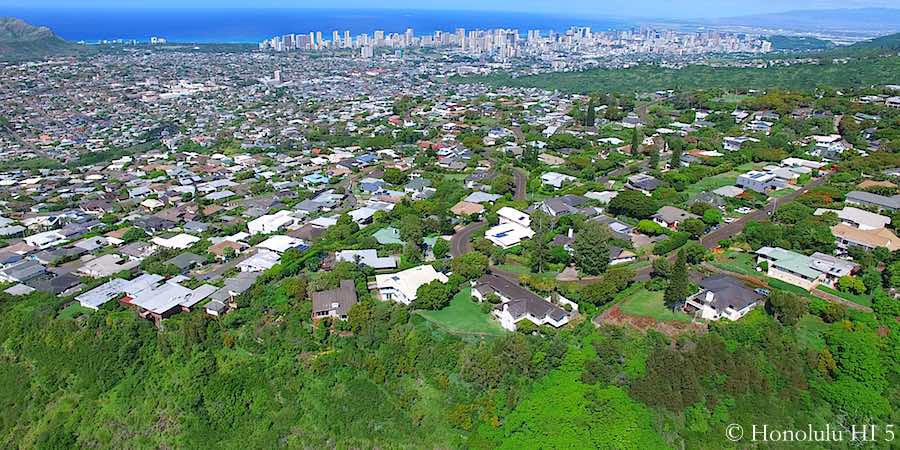
The 2nd turning point of the 1920’s was the establishment of the streetcars. Previously living close to Downtown was a requirement for many. Automobiles were available, but at this juncture they were a luxury out of reach for most, so being near where you earned your living was a necessity. This caused often extremely crowded living conditions.
With reliable public transportation in place, commuting was now possible for the many families without a car. Kaimuki, which had seen an earlier increase in population after the 1900 Chinatown Fire forced many to relocate, now saw a larger influx of new homes and residents.
The streetcar’s arrival was responsible as well for Kapahulu’s sudden growth, filling in these undeveloped lands just outside Waikiki, providing lots for both working and middle class families to live on within reach of the employment centers to the west.
It isn’t as well known that this factor was even a motivator for Manoa, a place that had been a retreat for the ali’i and, later, for families on the higher end of the economic ladder. Now, the cool, rainy valley became a feasible residence for a still well off, but not necessarily wealthy, class. Many of the vintage homes in Manoa come from that time, proof of the valley’s birthdate as a full neighborhood.
It’s interesting to note that the streetcar made living farther from Downtown possible and affordable for not just the blue collar workers, but also much of the white collar classes as well, benefiting many levels of the local population. The new transportation system carried locals from a wide spectrum as they headed Downtown each weekday morning.
As the price of cars began to drop in these same years becoming feasible to the finances of more and more people, all of these areas would fill in further, adding more new homes in Honolulu to satisfy an even greater demand.
WHEN HONOLULU BEGAN TO BOOM
The real acceleration kicked off in the post-World War II years as tourism boomed and Hawaii, while still significantly distant from Mainland US, moved more and more in reach as travel means steadily improved during this time.
It is almost impossible to overstate the changes our city went through in this period. When it began there were still large, viable farms within Honolulu’s borders. The tallest buildings in Waikiki were the Royal Hawaiian and Moana Hotels, with 6 stories each. If you told someone you were going out to where Hawaii Kai is now, it could only be to have a drink at Lucky’s Tavern. There was nothing else out there. Change was coming, and fast, but it wasn’t an immediate jackrabbit start.
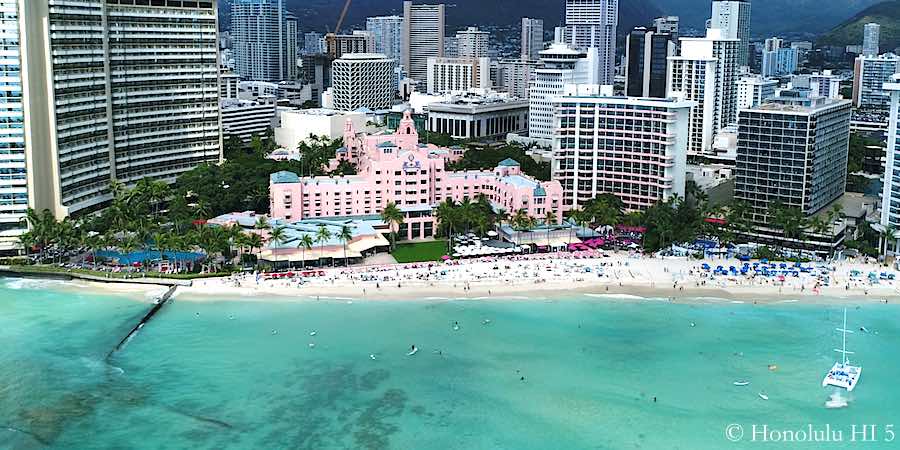
The 1940’s were times of little build up, though some did occur here and there. The obvious reason was the war, which brought huge numbers of service members to Oahu, but otherwise a freeze in the general population. Resources were all put toward the war effort as well, so outside of housing on military bases, there was little other residential construction possible. Of course, the following decades would see that pent up demand, and more besides, create a boom that has yet to end.
With the surrender of Japan, Honolulu could turn to more normal concerns. What most didn’t realize at first, was that a seismic change was now coming to the Islands. The alteration of Honolulu would take on new proportions never seen before. This was all due to a dramatic population growth in the 1950s and 60s that saw, in some cases, entirely new towns created on Oahu’s landscape.
These decades of increasing numbers coincided with key agricultural lands now being sold off for various reasons – declining profitability, generational transitions and the realization that selling at this fevered moment in Honolulu’s real estate history could bring a financial windfall never possible before.
EAST HONOLULU EMERGES
Aina Haina was the site of a large dairy farm, which closed in the late 1940’s. Shortly afterward, the owners sold their holdings, opening it up to homebuyers. Next door, Niu Valley had been one large farm, owned and operated by the family of Alexander Adams. His service to Kamehameha I as a military advisor was repaid by the grant of those lands in 1810.
It remained family farmland until the 1950’s when the Adams descendants, seeing smaller and smaller returns from their property, subdivided it into lots and put them on the market, creating the community we know now.
This kind of development was created by the individual buyers who were responsible for building their homes themselves, rather than a typical pre-planned and constructed project. The turnover from farm to residential community was immediate and complete, however, putting these new neighborhoods firmly in the modern expansion process that’s reigned in Honolulu real estate for the last 100 years.
This was the moment that Kahala took its full shape, having been almost exclusively sited in the most makai sections. In the period immediately after World War I the prosperous kamaaina began to build here, but it remained a small, very exclusive haven for them until yet another post-war period came. It became then, as it is now, some of the most prized real estate in Honolulu.
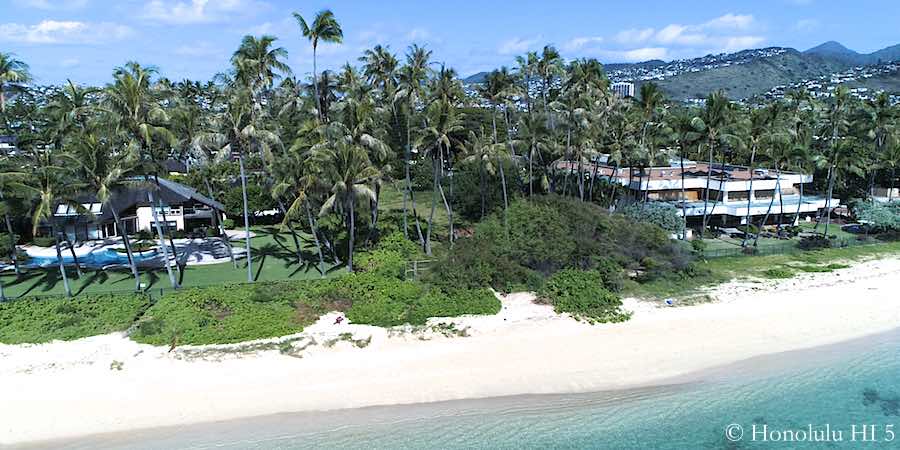
From the mid-1950s into the next decade the mauka areas saw their streets laid out and homes added along them. You could say that the Old Kahala was definitely gone when the Waialae Shopping Center opened in 1954, which was later renamed Kahala Mall.
Much of this build-up, at the time, was actually aimed at providing middle-class Honolulu homes to buy. Today, those buyers would find it much more difficult to purchase a place here as the name Kahala has become synonymous worldwide with sky high land values.
HAWAII KAI – BLUEPRINT FOR THE FUTURE
One of those communities that emerged from a more deliberate, and certainly more elaborate, design was propelled by one man, Henry Kaiser. With living conditions becoming more crowded closer to town, he saw a great opportunity by Maunalua Bay. Few had ever settled out here before and those that had were wiped out by the utter destruction of the 1946 tsunami. This was a blank canvas for him to create upon.
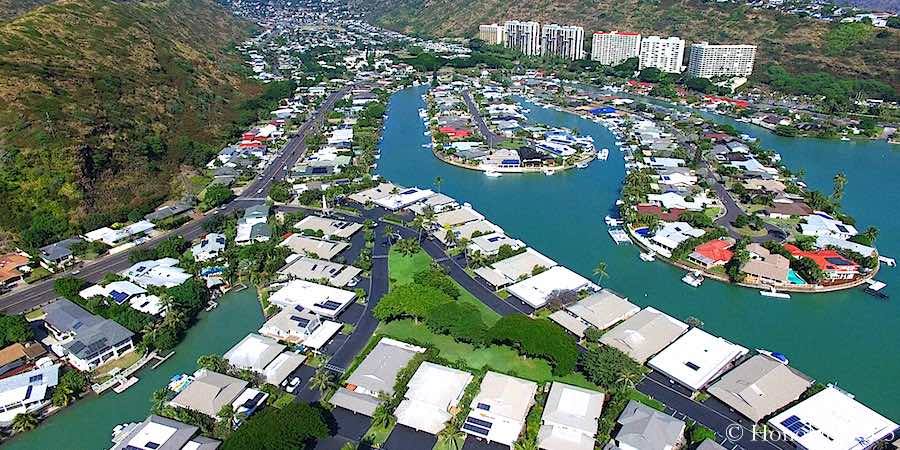
In 1959 he started by dredging his showcase marina from an ancient Hawaiian fishpond, with the lands and peninsula areas created and sculpted into the shapes they have today. 2 years later, with that work completed, Henry Kaiser began building the Hawaii Kai real estate he envisioned on his newly created terrain. This was to be the first master planned community, not just in Honolulu, but all of Hawaii.
The still eye-catching waterfront houses and townhomes soon came up, many with personal docks just outside, previously something only the rich could have with their homes in Honolulu. Over the years the area filled in, moving mauka from the marina and finally up the ridges, but all according to the plan. One smart element was to have the few multi-story condominiums located in the back of the valley or on the sides, keeping the views open for the otherwise one or two story residences.
In addition, there were parks and green spaces throughout, and the spacing between homes ensured that crowding was not allowed on these streets, something urban residents were drawn to in a new home.
Hawaii Kai was unlike anything before and nothing has really been like it since. This was a chance to create on a grand scale, combining a site that was wide open with a singular kind of man who had the will and the means to make it happen.
Other parts of town saw growth as well in these middle decades of the 1950s to the 70’s. Living up the Pali had been reserved for the rich and the ali’i up until this time, where the views were awesome and the temperatures cooler. Large estates, complete with mansion and acres of surrounding lands, spread out here.
Now, those holdings were broken up and new neighborhoods started to ascend up the hill, fanning out from both sides of the Pali Highway.
WEST SIDE OF HONOLULU – 1 ESTATE BIRTHS 3 NEIGHBORHOODS
The western limits of Honolulu were equally impacted at this time. The Damon Estate sold off a huge section of this area in 1956, so large that out of it was created Salt Lake, Moanalua Valley and Moanalua Gardens.
The buyer of much of it, developer Clarence Ching, followed a more traditional plan for some, selling the lots straight out to buyers, who then took on the responsibility of buildings their homes. It’s easy to see the result of that in the many houses in Moanalua and the western parts of Salt Lake, such as Foster Village.
Most of the eastern Salt Lake real estate is taken up by high-rise condos that rise up on the mauka side of Salt Lake Blvd, dipping downward from there. This collection of towers is home to a substantial percentage of the area’s population. It was yet another of the community of condos in Honolulu that were now common.
Back closer to Downtown, Lower Punchbowl began to see large additions, with condos rising up amid the older homes that were already there. The easy access to the government and business centers proved popular and it was a neighborhood affordable to working families.
HONOLULU REAL ESTATE GOES VERTICAL IN A BIG WAY
There were other influences within Mid-Century Honolulu that prompted, or at least accelerated change in some parts of town as well. Development in these years, for instance, came to one long established neighborhood, in part because of the great need of a facelift.
Waikiki had, by the early 1960’s, moved firmly to the rough division it has today. Mauka of Kuhio Avenue is residential. Kuhio Avenue and makai is tourist. Unfortunately, the homes in that mauka end were now decades old and had become run down, attracting an unsavory crowd who lived in them.
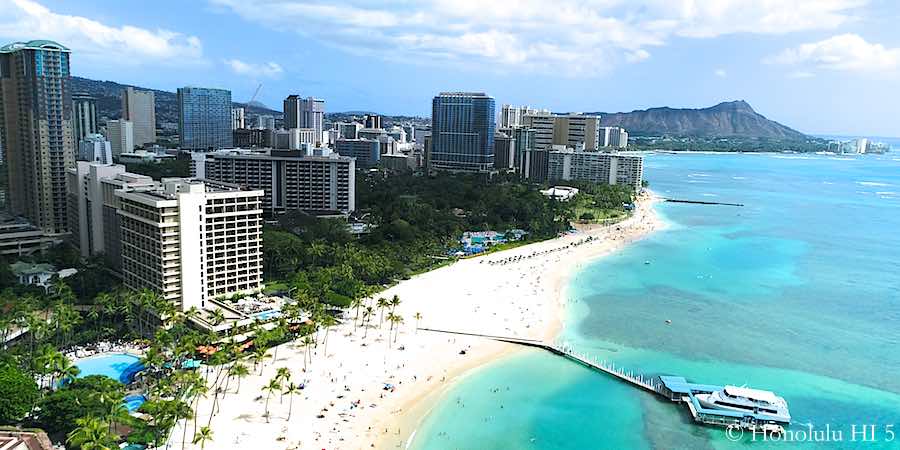
This was becoming not only a policing issue, but also an economic one, affecting the visitor industry, rooted in the same district, that was the State’s financial engine. These problems coincided with an only growing demand for housing. A solution for all of these worries was found by sweeping these lands clean and building condos.
A methodical dating today of the residential condominiums shows just how much the landscape changed in less than 2 decades. Almost all of the buildings that make up the ‘local’ area of Waikiki were raised up in the 1960’s and 70’s. It was a forerunner of much of the central real estate in Honolulu, creating a tower-dominated community where single family houses once stood. A sign of much to come as condos in Honolulu were soon the dominant residential option.
BOOM & BUST COMES TO HONOLULU
The last 20 years leading up to the Millennium saw a slowing down from the frantic pace of the previous years. However, this was the era of the Japanese investment frenzy in Hawaii, so that still pushed some extremely large projects.
In addition to buying up homes in Honolulu, sometimes just to build a bigger house, wealthy Japan speculators looked to raise something more substantial in the hopes of a profit. Many projects were financed across Hawaii, the money flowing fast and easy. Unfortunately, that was not to last.
The most notorious example that illustrates both sides of this boom time is the Waikiki Landmark. The huge condominium was spared no expense as it went up, the backers believing the skyrocketing prices of property in Honolulu would only keep going upward. Their timing could not have been worse, the building coming close to completion just as the Japan economic bubble burst. Tied up by over-expenditures and a collapsed market, the mammoth tower sat empty for years.
The now substantial financial ties between Japan and Hawaii heavily impacted our own economy, taking it downward and, for the 1st time ever, actually depressing real estate. Development in Honolulu came to something close to a halt.
It would not be until the turn of this century that things would heat up again, but when they did, it would get very hot.
KAKAAKO: CRISIS MEETS OPPORTUNITY
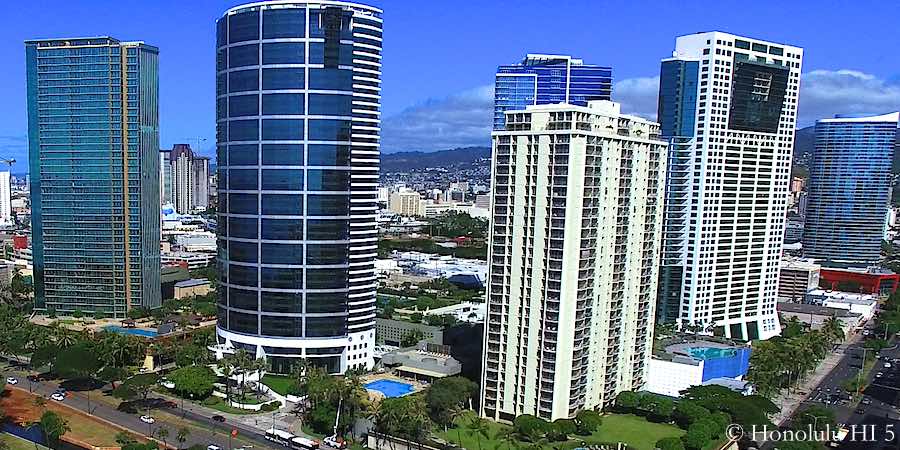
The latest tsunami of construction in Honolulu has come to the area of Kakaako. Once a vibrant neighborhood, it was turned into an industrial area after a zoning change was made from residential to commercial in the Mid-20th Century. While much of Honolulu was opening up new lands for housing, Kakaako went the other way, clearing out the community here.
Until very recently the streets were lined with warehouses, car repair shops, offices and other concerns that turned most of the place into a ghost town after 6PM. The housing crisis, meanwhile, had reached new levels of concern so relief was badly needed. In light of that, the possibilities of a new residential district inhabiting the prime part of town bridging Ala Moana and Downtown were obvious.
This was more than a rare opening in modern Honolulu to build upon. It was the first opportunity since Henry Kaiser’s Hawaii Kai to completely create an entire community from scratch. It may even be the last one ever within the city limits.
More than a tower community, Kakaako is intended to redefine the life and lifestyle of Honolulu condos. Where most high-rises are surrounded by concrete and usually few pau hana choices, there will be large parks and open spaces, a pedestrian centered environment with grassy areas throughout and an endless menu of places to shop, dine and be entertained across the entire district.
HONOLULU CONDOS THAT FIT THE ISLAND LANDSCAPE
Homes will be modern, cutting edge residences with green technology, innovative design inside & out and yet in harmony with the Island’s environment and culture. In addition, fine living will find new heights in luxury condos with endless, eternal ocean views, the finest interior touches and features such as in-home infinity pools, personal elevators and lanais that are nothing short of large entertaining spaces, complete with kitchens.
The first true centerpiece of the vision, the Waiea, with its cast-fishnet inspired glass face, with the unsymmetrical Anaha nearing completion, are the proof that it all works not just on paper, but on our streets. With more coming, such as the Cylinder at Gateway Towers, the pieces of the Kakaako puzzle will fall more and more into place, forming into something quite special.
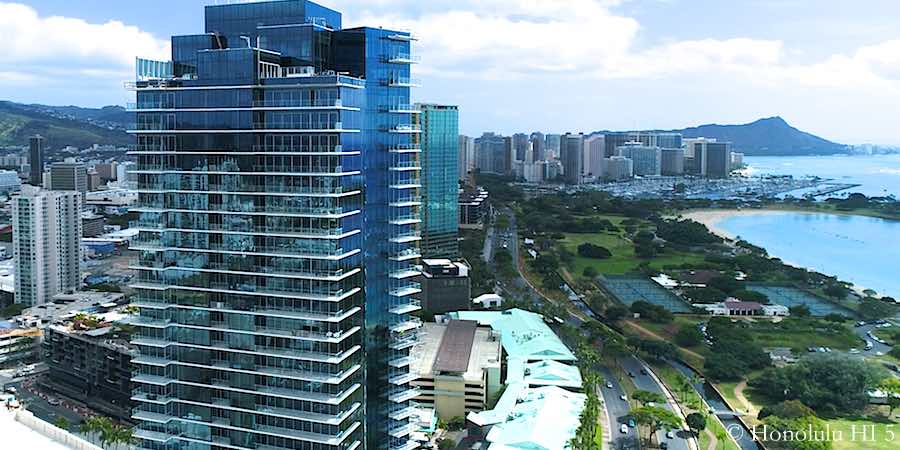
What might be amazing most of all is that the local community has overall been supportive and positive feeling for this new Kakaako. In a city that has grown weary of seeing the skyline grow more crowded in the last few decades, that is extremely significant.
WHERE ARE WE GOING FROM HERE?
As Honolulu has grown outward and now upward in its history, there is something to be hopeful about for the future of this beloved city. If future builders take note of Kakaako’s approach and apply its aina awareness and livability approach, then maybe Development will no longer be such a bad word to Islander ears. Honolulu homes may have changed their basic form, but they can once again be the warm, inviting places that made them so beloved.
